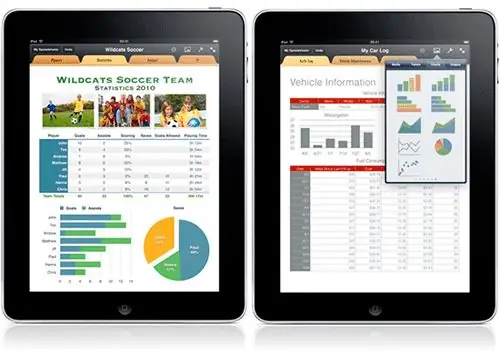In order for the text not to be boring and monotonous, it must be "diluted" with lists, diagrams, diagrams, tables. This will transform any document, make it visual and vivid. Moreover, using convenient tools, you can easily turn this process into an entertaining and creative one.

Instructions
Step 1
You can execute the table in many programs. This is a lot of text, graphic programs, and special tabular (for example, Excel), and a visual editor. Having understood the principle of its creation, you can easily cope with the task in any of them. Let's try to draw a table in Word. Selecting the first item “draw a table” from the “table” menu, open the “tables and borders” window.
At the top of the window there are buttons "draw a table" and "eraser" (erase unnecessary).
In the center there is a line that draws the table, its size. Click on the triangle on the right to select the line type (solid, dotted, dash-dotted, double, triple, etc.) and thickness.
At the bottom of the window are formatting buttons (combine / split cells, centering, aligning rows and columns, and others).
Step 2
Press the main button "draw a table", the cursor will change (take the form of a pencil). Everything is ready for drawing.
Once in the upper left corner, move the cursor down and to the right. Behind the cursor, you can see a dotted frame - it shows the shape of the future table. As soon as the mouse button is released, the frame line will become visible (it will take the form that was selected at the beginning). In order for the lines to be even, the corners are straight, you do not need to do anything, in the drawing mode this happens automatically.
Drawing rows and columns is done in the same way. For columns move the cursor from top to bottom, for rows from left to right. Each cell can be further divided into rows and columns.
There is no need to worry about the size of the frame and cells being exactly what you want. Once the table is complete, it can be easily resized.
Step 3
When the skeleton of the table is ready, fill it with content. Don't worry about font type and size at first. Format the already filled table:
• finally determine the width of the rows and columns by the content (use the sliders on the ruler for this);
• if necessary, change the font style and size, its color and orientation;
• define the position of the text in the cell (in height, in width);
• change borders and fill of both cells and tables.
Your table is ready.
Step 4
In addition to manual formatting, you can apply automatic formatting. Having what you are looking for in the set of standard formats will greatly simplify your work. You will find automatic formatting in the same window, which was discussed above (the "auto formatting" button). You can also find this function in the menu "table" - insert - table - autoformat.
In addition, you can significantly speed up the work on formatting a table by installing additional buttons on the toolbar (aligning rows and columns, merging / splitting cells, drawing a table, etc.).






